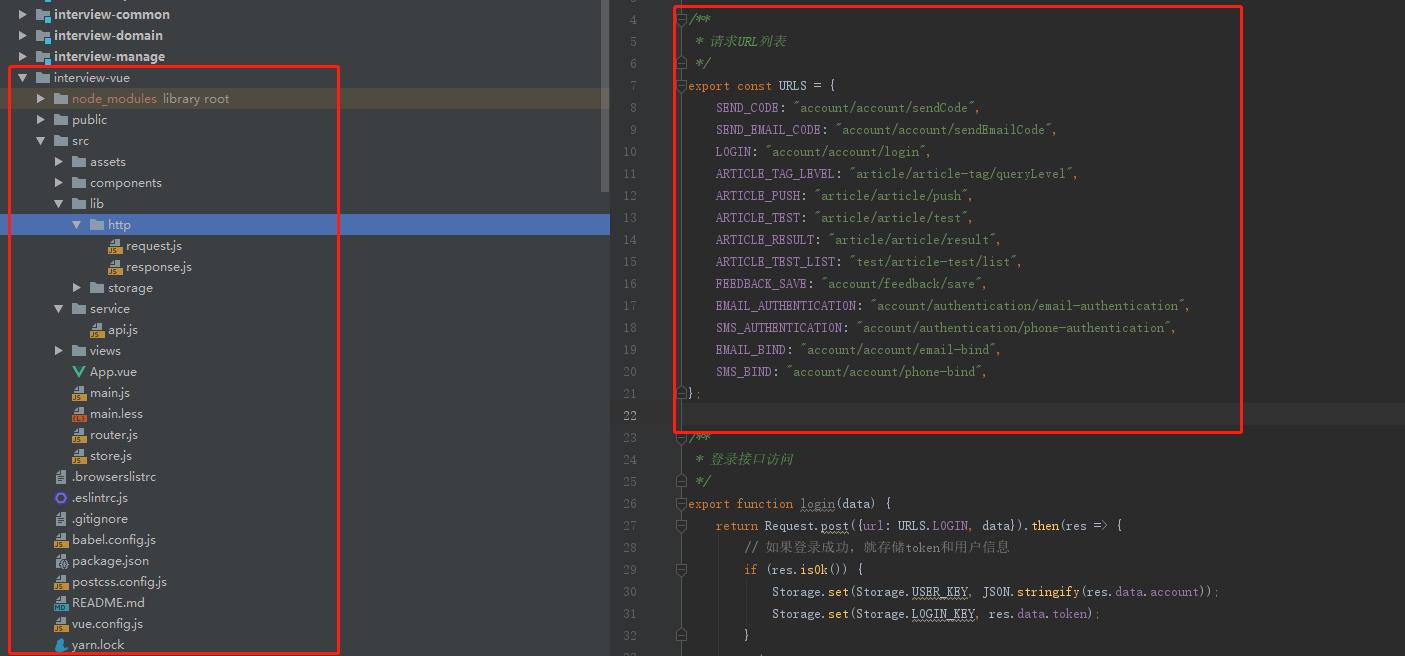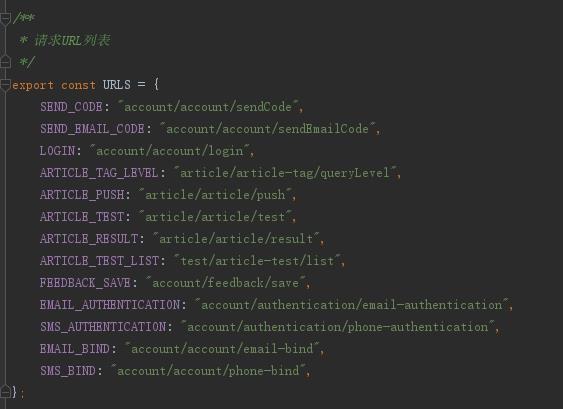VUE动态(自动)Loading绑定到URL,同页面多个Loading互不冲突
Posted Afriend 蒋具宏
tags:
篇首语:本文由小常识网(cha138.com)小编为大家整理,主要介绍了VUE动态(自动)Loading绑定到URL,同页面多个Loading互不冲突相关的知识,希望对你有一定的参考价值。
需求来源:当使用React时,使用 umi loading 很方便,页面对http请求发生改变时,也会自动改变loading的相关状态(true/false)

对VUE插件进行找寻,发现没找到合适内容,就参考思路自行设计了一套
功能实现
界面Loading自动加载,不需要在每个请求前后进行拦截,且配置简单、实现方便,如图:

技术栈
vue、vuex、axios(http请求)
开始实现
第一步,文件目录结构介绍:

lib/http: Http封装,对系统请求进行封装
service/api.js: 请求接口提取(统一管理请求URL,详细内容见右)
store.js: 全局状态
第二步,接口统一提取(service/api.js)

如上是提取的统一URL内容,使用时直接引入
第三步,全局状态封装(store.js)
1 import Vue from "vue"; 2 import Vuex from "vuex"; 3 import * as Service from \'@/service/api\'; 4 5 Vue.use(Vuex); 6 7 // 实现自动注册loading URl 8 const loading = {}; 9 Object.values(Service.URLS).forEach(value => { 10 loading[value] = false; 11 }); 12 13 export default new Vuex.Store({ 14 state: { 15 // url请求列表,自动注册 16 loading: loading 17 }, 18 mutations: { 19 loading(state, url) { 20 state.loading[url] = true; 21 }, 22 unloading(state, url) { 23 state.loading[url] = false; 24 } 25 }, 26 actions: {} 27 });
第四步,Http封装
1 import axios from \'axios\'; 2 import store from \'../../store\' 3 4 5 /** 6 * 设置请求前缀(末尾必须包含 / 否则会导致动态loading失败) 7 */ 8 axios.defaults.baseURL = "http://www.huic.top/"; 9 10 /** 11 * 定义一个请求拦截器(Loading设置true) 12 */ 13 axios.interceptors.request.use(function (config) { 14 store.commit("loading", config.url); 15 return config 16 }); 17 /** 18 * 定义一个响应拦截器(Loading设置为false) 19 */ 20 axios.interceptors.response.use(function (response) { 21 store.commit("unloading", response.config.url.replace(axios.defaults.baseURL, "")); 22 return response 23 });
这里的封装只封装了拦截器,并未对具体请求进行封装,因为请求封装在这里可有可无,如需要的请留一下邮箱
第五步,使用
1 <script> 2 import \'./index.less\'; 3 import * as Service from \'@/service/api\'; 4 5 export default { 6 data: () => ({ 7 // 题目标签 8 tags: [], 9 }), 10 computed: { 11 tagLoading() { 12 return this.$store.state.loading[Service.URLS.ARTICLE_TAG_LEVEL]; 13 }, 14 testLoading() { 15 return this.$store.state.loading[Service.URLS.ARTICLE_TEST]; 16 } 17 }, 18 created() { 19 this.queryTags(); 20 }, 21 components: { 22 }, 23 methods: { 24 /** 25 * 查询标签列表(请求封装查询,也可直接使用 axios.post 等内容) 26 */ 27 queryTags() { 28 Service.articleTagLevel({}).then(res => { 29 if (res.isOk()) { 30 this.tags = res.data.records; 31 } 32 }); 33 } 34 } 35 }; 36 </script>
以上代码为VUE简单使用,则将loading - url - 组件进行绑定,则代表在本页面进行请求,例如:articleTagLevel,则会自动绑定loading(见12行)
以上核心代码为10-17行,代表将url和loading属性绑定,使用方法见下:
1 <div class="test-body-item"> 2 <Row> 3 <Col span="2" class="test-body-item-title"> 4 标签选择 5 </Col> 6 <Col span="21" offset="1"> 7 <TagGroup :data="tags" :loading="tagLoading"/> 8 </Col> 9 </Row> 10 </div>
使用方法:第 7 行,其中 :loading="tagLoading" 则代表将tagLoading属性绑定到loading参数中
至此,实现成功.
End.
以上是关于VUE动态(自动)Loading绑定到URL,同页面多个Loading互不冲突的主要内容,如果未能解决你的问题,请参考以下文章